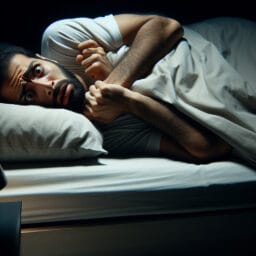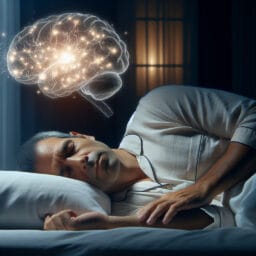Exploring the Unconscious: Defining Hypnagogic Experiences
Table of Contents
- Introduction: Brief overview of hypnagogic experiences
- Defining Hypnagogic Experiences: Detailed definition and explanation
- The Science Behind Hypnagogic Experiences: Explanation of the biological and psychological processes involved
- Common Hypnagogic Experiences: Listing and description of common experiences
- The Role of Hypnagogic Experiences in Creativity and Problem Solving: Exploration of how these experiences can influence creativity and problem solving
- Hypnagogic Experiences and Mental Health: Discussion on the relationship between these experiences and mental health
- Conclusion: Summary of the importance and impact of understanding hypnagogic experiences
- Frequently Asked Questions
Introduction: Brief overview of hypnagogic experiences
Diving deep into sleep medicine, hypnagogic experiences are intriguing phenomena that occur as you transition from wakefulness to sleep. This phase, known as the hypnagogic state, bridges your conscious and subconscious worlds and is often punctuated by vivid experiences that extend beyond ordinary dreaming. You may see geometric shapes or detailed scenarios, hear sounds or voices—these are all examples of hypnagogic hallucinations. Unlike the hallucinations associated with mental health disorders, these sensory experiences are a common part of falling asleep and aren’t necessarily indicative of an underlying condition—they’re more akin to brief intrusions of dream content into waking consciousness before REM sleep sets in.
However, it’s not just visual or auditory experiences; physical sensations like muscle twitches or feeling like you’re falling (also known as “hypnic jerks”) often accompany this transitional state to deep sleep. These occurrences might be startling but they’re generally harmless—a sign that your brain is switching gears for a restful slumber.
Contrasting with the emotional quality associated with dreams during REM sleep, hypnagogic illusions can sometimes be influenced by external stimuli from our environment—a dog barking outside might transform into hearing voices in a dreamlike scenario. Due to these fascinating characteristics, understanding such semi-conscious states adds valuable depth to our comprehension of human cognition and sheds light on how we process internal thoughts alongside external reality—a central focus within the field of sleep medicine.
Defining Hypnagogic Experiences: Detailed definition and explanation
Hypnagogic hallucinations, a common occurrence during the transition from wakefulness to sleep, offer a fascinating insight into our mind’s capabilities. Unlike ordinary dreaming which takes place primarily during REM sleep, these sensory experiences occur in the hypnagogic state—just as you’re falling asleep. Many people experience vivid visual or auditory impressions right on the edge of consciousness. They might see intricate geometric patterns or hear distant murmurs; others feel physical sensations like muscle twitches that jolt them awake.
Now, it’s important to distinguish between hypnagogic and hypnopompic states—the former refers to the period when we fall asleep while the latter deals with waking up. Both stages involve a shift in our brain’s electrical activity—from beta waves of alertness to slower alpha and theta waves—and are often accompanied by unique perceptual phenomena.
Interestingly, contrary to hypnagogic illusions which are dreamlike responses to external stimuli—say, incorporating a dog’s bark outside your window into your dreamscape—hypnopompic hallucinations tend to be more internally generated and intensely emotional in nature.
While certain health conditions can increase their frequency or intensity (such as sleep deprivation or mental health disorders), experiencing such vivid imagery isn’t necessarily indicative of an underlying condition—in fact they’re quite common effects for the general population navigating through this transitional state before deep sleep sets in. As we continue exploring this fascinating realm within sleep medicine, we not only unravel more about our neural correlates but also broaden our understanding of human cognition at large.
The Science Behind Hypnagogic Experiences: Explanation of the biological and psychological processes involved
As we delve into the realm of sleep medicine, it’s fascinating to discover how REM sleep plays a pivotal role in hypnagogic experiences. When you’re falling asleep, your brain transitions through different stages, each marked by unique electrical activity and sensory phenomena. During this transitional state, as we teeter on the edge of consciousness before succumbing to deep sleep, hypnagogic hallucinations often occur. Here’s where things get intriguing – unlike ordinary dreaming that occurs during REM sleep; these vivid experiences arise even before that stage is reached.
Our neural correlates work wonders during this phase. As beta waves slow down into drowsy alpha waves and then to theta waves associated with early stages of sleep, our minds conjure up complex imagery or sounds—forging what we recognize as hypnagogic hallucinations. Sometimes these can be influenced by external stimuli; at other times they could be spontaneous creations of our cognitive processing.
While people experience these phenomena differently – some might see geometrical patterns explode into vibrant colors while others hear voices or indistinct murmurs – one common feature prevails: They are quite normal and don’t necessarily indicate an underlying health condition. However, understanding them helps us better navigate potential sleep disorders like insomnia or narcolepsy where such experiences may become more intense due to factors like sleep deprivation or mental health disorders. A deeper grasp on hypnagogic states thus enriches not only our knowledge within the field but also provides significant insights for managing overall well-being.
Common Hypnagogic Experiences: Listing and description of common experiences
This fascinating journey into the realm of sleep takes us to common hypnagogic hallucinations that many people experience – some awaken with a start, feeling as if they’re falling; others report hearing sounds or voices just as they’re entering deep sleep. The emotional quality of these sensory experiences can vary widely, from bewilderment to amusement, and even terror in some instances like during sleep paralysis. It’s intriguing to note how these hypnagogic states differ from ordinary dreaming during REM sleep.
While dreams tend to have an emotional narrative woven through them, hypnagogic experiences often present themselves as disjointed fragments or unfamiliar patterns—perhaps a sudden muscle twitch or vivid imagery devoid of context. They’re less like traditional stories we see in dreams and more like abstract art pieces of the mind—echoing our brain’s shift in electrical activity and neural correlates transitioning us into slumber.
Interestingly, contrary hypnagogic illusions are dreamlike responses that integrate elements from our external environment—the distant hum of traffic could transmute into an auditory experience within your half-awake mind. It goes without saying that understanding these phenomena paves the way for deeper insights into mental health conditions related to disturbed sleep cycles while also providing a window into how our brains process reality when on the brink of unconsciousness—a testament indeed to the complexities woven intrinsically within human cognition.
| Hypnagogic Experience | Description | Emotional Reaction |
|---|---|---|
| Hypnagogic Hallucinations | Sensory experiences that occur as one is drifting into sleep. They can include feelings of falling, hearing sounds or voices, or seeing vivid imagery devoid of context. | Varies widely, from bewilderment to amusement, and can potentially induce terror in cases of sleep paralysis. |
| Dreaming during REM sleep | Emotionally-charged narratives that often make use of familiar elements and follow a more or less coherent storyline. | Depends on the context and content of the dream, but generally corresponds with the emotional tone of the dream narrative. |
| Hypnagogic Illusions | Dreamlike responses that integrate elements from the external environment into the half-awake mind’s experience. | Varies depending on how the brain interprets the integrated external stimuli—can be neutral, amusing, or startling. |
The Role of Hypnagogic Experiences in Creativity and Problem Solving: Exploration of how these experiences can influence creativity and problem solving
The intriguing realm of sleep medicine takes an unexpected turn when we look at the intersection of hypnagogic states and creativity. As your brain waves shift from alert beta waves to slower alpha and theta rhythms while falling asleep, you might experience rich hypnagogic hallucinations—vivid, abstract patterns or scenarios that flicker on the edge of consciousness. Some of history’s most influential minds have harnessed this transitional state for creative problem-solving. Notably, Thomas Edison would often hover in a hypnagogic state to generate innovative ideas; Salvador Dali leveraged his own surreal hypnagogic imagery as inspiration for his iconic artwork.
These experiences can also spark ‘Eureka’ moments. The foggy boundary between wakefulness and sleep during this stage encourages free association—a cognitive process where ideas are unconstrained by logical filters, leading to novel connections between disparate thoughts. Hypnagogic illusions blend elements from our internal and external worlds, weaving a unique tapestry that can fuel creative insight and problem-solving prowess.
Mental health disorders or severe sleep deprivation might amplify these sensory experiences, making it important to ensure healthy sleeping habits for best results. So next time you’re falling asleep and encounter an unusual auditory experience or see complex geometric shapes dance before your eyes—they may just be signals heralding your very own ‘Eureka’ moment!
Conclusion: Summary of the importance and impact of understanding hypnagogic experiences
In the intriguing landscape of sleep medicine, gaining an understanding of hypnagogic experiences can offer profound insights into our cognitive processes. As we traverse between wakefulness and sleep – a period known as the hypnagogic state – our brain dances from alert beta waves to slower alpha rhythms, sometimes sparking off vivid sensory experiences or hypnagogic hallucinations. These aren’t mere quirks of falling asleep; they’re rich tapestries of abstract imagery that can potentially fuel creative thought and problem-solving abilities. We stand at a promising frontier in medical research, where delving deeper into these phenomena could provide substantial benefits for mental health disorders, understanding sleep patterns, and even enhancing creativity. Grasping such nuances could revolutionize not just how we perceive common effects like muscle twitches or hearing sounds when we fall asleep but also shape our relationship with deep sleep itself—an inherent facet shaping our well-being.


